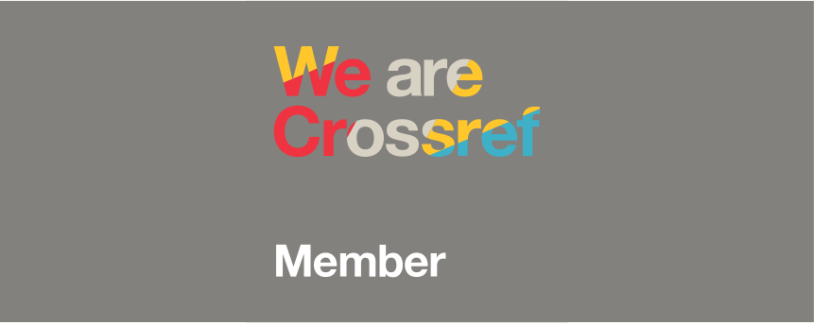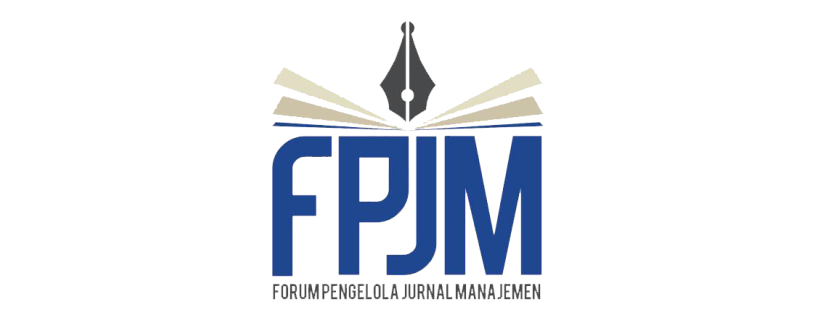Achieving Competitive Advantage of SMEs in Malang City through Resource Based View, Entrepreneurship Orientation, and Innovation
DOI:
https://doi.org/10.26905/jmdk.v10i2.7691Keywords:
Competitive Advantage, Entrepreneurial Orientation, Innovation, Resource Based ViewAbstract
This explanatory study aimed to examine the mediating role of innovation in influencing resource-based view strategy and entrepreneurial orientation on competitive advantage. The samples taken in the study were 100 handicraft Small and Medium Enterprises (SMEs) in Malang, Indonesia. The data was collected using a quantitative approach by distributing a survey. Validity and reliability tests have been passed before testing the actual data analysis with SEM-PLS. The results indicate that innovation significantly mediates resource-based view strategy and entrepreneurial orientation on competitive advantage. If SMEs strive to achieve a highly competitive advantage through resource-based view strategies and entrepreneurial orientation, the ability to innovate has an essential role in this relationship. Hence, SMEs need to have good resources and adequate skills to enhance attitudes such as continuously developing innovative products, being brave in taking existing risks, and always making innovations. These strategy options can help the success in achieving a competitive advantage.
Downloads
References
Aziz, N. N. A., & Samad, S. (2016). Innovation and competitive advantage: Moderating effects of firm age in foods manufacturing SMEs in Malaysia. Procedia Economics and Finance, 35(October 2015), 256–266. https://doi.org/10.1016/s2212-5671(16)00032-0
Barney, J. B. (2001). Resource-based theories of competitive advantage: A ten-year retrospective on the resource-based view. Journal of management, 27(6), 643-650.
Chatzoglou, P., & Chatzoudes, D. (2018). The role of innovation in building competitive advantages: an empirical investigation. European Journal of Innovation Management, 21(1), 44–69. https://doi.org/10.1108/EJIM-02-2017-0015
Dahmiri, D., Bhayangkari, S. K. W., & Khalik, I. (2021). Pengaruh kualitas produk dan inovasi terhadap keunggulan bersaing UMKM kuliner di masa pandemi Covid-19. Ekonomis: Journal of Economics and Business, 5(2), 434. https://doi.org/10.33087/ekonomis.v5i2.401
Darojatin, K., Surachman, S., & Andarwati, A. (2016). Pengaruh strategi resource-based terhadap keunggulan bersaing melalui inovasi pada usaha mebel kayu di Kota Pasuruhan. Jurnal Aplikasi Manajemen, 14(4), 714–726.
https://doi.org/10.18202/jam23026332.14.4.12
Destari, F., & Harjanti, W. (2014). Menyelaraskan orientasi kewirausahaan dan kapasitas inovasi untuk mendapatkan keuntungan kompetitif pada industri kreatif (Studi empirik pada industri batik di Kabupaten Jember). Media Mahardika, 12(2), 69–90.
Donnellan, J., & Rutledge, W. L. (2019). A case for resource-based view and competitive advantage in banking. Managerial and Decision Economics, 40(6), 728–737. https://doi.org/10.1002/mde.3041
Ferreira, J. J., Azevedo, S. G., & Ortiz, R. F. (2011). Contribution of resource-based view and entrepreneurial orientation on small firm growth. Cuadernos de Gestion, 11(1), 95–116. https://doi.org/10.5295/cdg.100185jf
Fitriyadi, E. P. (2021). Inovasi e-commerce dan starup sebagai tantangan masyarakat industri 4.0. Jurnal ESIT (E-Bisnis, Sistem Informasi, Teknologi), 14(3), 34–39.
Helia, R., Farida, N., & Prabawani, B. (2015). Pengaruh orientasi pasar dan orientasi kewirausahaan terhadap keunggulan bersaing melalui inovasi produk sebagai variabel antara (Studi kasus pada IKM Batik di Kampung Batik Laweyan, Solo). Jurnal Ilmu Administrasi Bisnis, 4(4), 281-290. https://doi.org/10.14710/jiab.2015.9360
Hendarwan, D. (2019). Menumbuhkan jiwa, perilaku dan nilai kewirausahaan dalam meningkatkan kemandirian bisnis. MBIA, 17(2), 59–68. https://doi.org/10.33557/mbia.v17i2.345
Hit, M. A., Ireland, R. D., & Hoskinson, R. (2001). Managemen Strategi, Daya Saing Globalisasi. Jakarta: Salemba Empat.
Hussein, A. S. (2015). Penelitian Bisnis dan Manajemen Menggunakan Partial Least Squares (PLS) dengan smartPLS 3.0. Malang: Universitas Brawijaya.
Imam, S., & Zainul, A. (2014). The effect of market orientation and entrepreneurial orientation toward learning orientation, innovation, competitive advantages and marketing performance. European Journal of Business and ManagementOnline), 6(21), 2222–2839.
Ismail, A. I., Rose, R. C., Uli, J., & Abdullah, H. (2012). The relationship between organisational resources, capabilities, systems and Competitive Advantage. Asian Academy of Management Journal, 17(1), 151–173.
Kasmir. (2012). Kewirausahaan. Jakarta: PT Raja Grafindo Persada
Kumlu, Ö. (2014). The effect of intangible resources and competitive strategies on the export performance of small and medium sized enterprises. Procedia-Social and Behavioral Sciences, 150, 24-34.
Li, S., Ragu-Nathan, B., Ragu-Nathan, T. S., & Subba Rao, S. (2006). The impact of supply chain management practices on competitive advantage and organizational performance. Omega, 34(2), 107–124. https://doi.org/10.1016/j.omega.2004.08.002
Makhloufi, L., Laghouag, A. A., Sahli, A. A., & Belaid, F. (2021). Impact of entrepreneurial orientation on innovation capability: The mediating role of absorptive capability and organizational learning capabilities. Sustainability (Switzerland), 13(10). https://doi.org/10.3390/su13105399
Merakati, I. R. W. (2017). Pengaruh orientasi pasar, inovasi, orientansi kewirausahaan melalui keunggulan bersaing terhadap kinerja pemasaran. Journal of Economic Education, 6(2), 114–123. https://doi.org/10.15294/jeec.v6i2.19297
Metekohy, S. (2013). Pengaruh strategi resource-based dan orientasi kewirausahaan terhadap keunggulan bersaing usaha kecil dan usaha mikro (Studi pada Usaha Jasa Etnis Maluku). Jurnal Aplikasi Manajemen (JAM), 11(1),12-20
Mosakowski, E. (1998). Entrepreneurial resources, organizational choices, and competitive outcomes. Organization science, 9(6), 625-643.
Na’imah, Y. (2021). Pengaruh orientasi kewirausahaan dan orientasi pasar terhadap keunggulan bersaing melalui inovasi produk (Studi pada pelaku UKM di Kabupaten Purworejo). Volatilitas, 3(2), 1–19.
Nieves, J., Quintana, A., & Osorio, J. (2014). Knowledge-based resources and innovation in the hotel industry. International Journal of Hospitality Management, 38, 65–73.
https://doi.org/10.1016/j.ijhm.2014.01.001
Noviani, L. (2020). Pengaruh inovasi produk, kreativitas produk, dan kualitas produk terhadap keunggulan bersaing (Studi kasus pada Kerajinan Tikar Eceng Gondok†Liarâ€). Jurnal Manajemen dan Bisnis, 2(01), 2076–2086.
Obeidat, U., Obeidat, B., Alrowwad, A., Alshurideh, M., Masa’deh, R., & Abuhashesh, M. (2021). The effect of intellectual capital on competitive advantage: The mediating role of innovation. Management Science Letters, 11, 1331–1344.
https://doi.org/10.5267/j.msl.2020.11.006
Parkman, I. D., Holloway, S. S., & Sebastiao, H. (2012). Creative industries: Aligning entrepreneurial orientation and innovation capacity. Journal of Research in Marketing and Entrepreneurship, 14(1), 95–114. https://doi.org/10.1108/14715201211246823
Paulus, A. L., & Murdapa, P. S. (2016). Pemanfaatan teori resource-based view pada ritel minimarket: Implikasinya terhadap strategi dan keunggulan bersaing. Jurnal Riset Ekonomi dan Manajemen, 16(2), 215.
https://doi.org/10.17970/jrem.16.160204.id
Priatin, Y., Surya, D., & Suhendra, I. (2017). Pengaruh orientasi pasar dan orientasi kewirausahaan terhadap kinerja pemasaran dengan inovasi produk sebagai variabel intervening (Studi pada Kelompok Usaha Bersama (KUB) Gerabah di Desa Bumi Jaya Kecamatan Ciruas Kabupaten Serang). JRBM Tirtayasa: Jurnal Riset Bisnis dan Manajemen Tirtayasa, 1(1), 81–96.
Rahmadi, A. N., Jauhari, T., & Dewandaru, B. (2020). Pengaruh orientasi pasar, inovasi dan orientasi kewirausahaan terhadap keunggulan bersaing pada UKM di jalanan Kota Kediri. Jurnal Ekbis, 21(2), 178. https://doi.org/10.30736/je.v21i2.510
Ramadhani, N. (2019). Pengaruh resource based view dan kinerja bisnis terdap daya asing usaha (Studi kasus pada cafe di Wilayah Medan Area). Skripsi.
Riyanto, S. (2018). Analisis pengaruh lingkungan internal dan eksternal terhadap keunggulan bersaing dan kinerja usaha kecil menengah (UKM) di Madiun. JMBI UNSRAT (Jurnal Ilmiah Manajemen Bisnis dan Inovasi Universitas Sam Ratulangi), 5(3), 159–168. https://doi.org/10.35794/jmbi.v5i3.21707
Rosi, F., & Andjarwati, A. L. (2018). Analisis perbandingan pengaruh endorser terhadap sikap pada merek Shampo Sunsilk dan Shampo Pantene. BISMA (Bisnis dan Manajemen), 6(1), 32-40.
https://doi.org/10.26740/bisma.v6n1.p32-40
Sari, S. D., Saroh, S., & Zunaida, D. (2020). Pengaruh orientasi pasar, inovasi produk dan jaringan usaha terhadap keunggulan bersaing (Studi pada UMKM Rotan di Balearjosari Kecamatan Blimbing Kota Malang). JIAGABI (Jurnal Ilmu Administrasi Niaga/Bisnis), 9(1), 85–93.
Sarsah, S. A., Tian, H., Dogbe, C. S. K., Bamfo, B. A., & Pomegbe, W. W. K. (2020). Effect of entrepreneurial orientation on radical innovation performance among manufacturing SMEs: the mediating role of absorptive capacity. Journal of Strategy and Management, 13(4), 551-570.
https://doi.org/10.1108/JSMA-03-2020-0053
Sarstedt, M., Ringle, C. M., & Hair, J. (2017). Partial Least Squares Structural Equation Modeling. In Homburg, C. Klarmann, M. Vomberg A. (Eds.), Handbook of Market Research. Springer.
Sartika, S., & Handayani, T. (2021). Pengaruh strategi resource based view dan orientasi kewirausahaan terhadap keunggulan bersaing di Sentra Jeans Cihampelas Bandung. Journal of Economics, Management, Business, and Accounting, 1(1), 107–116.
Scheepers, M. (2012). Antecedents of strategic corporate entrepreneurship. European Business Review, 24(5), 400–424.
Sundbo, J. (2003). Innovation and strategic reflexivity: an evolutionary approach applied to services. The International Handbook on Innovation, 97–114. https://doi.org/10.1016/B978-008044198-6/50008-5
Syukron, M. Z., & Ngatno, N. (2016). Pengaruh orientasi pasar dan orientasi kewirausahaan terhadap inovasi produk dan keunggulan bersaing UMKM Jenang di Kabupaten Kudus. Jurnal Ilmu Administrasi Bisnis, 5(4), 209-222.
Udriyah, U., Tham, J., & Azam, S. (2019). The effects of market orientation and innovation on competitive advantage and business performance of textile SMEs. Management Science Letters, 9(9), 1419-1428. https://doi.org/10.5267/j.msl.2019.5.009
Usman, M., & Mat, A. (2017). Assessing the importance of entrepreneurial orientation on innovation in service sector. International Journal of Business and Management Invention, 6(7), 2319–8028.
Utama, L., Widjaja, O. H., & Lego, Y. (2020). Pengaruh orientasi kewirausahaan terhadap keunggulan kompetitif pada UKM industri kreatif dengan kapasitas inovatif sebagai faktor mediasi dalam masa pandemik Covid-19. Jurnal Bina Manajemen, 9(1), 30–43. https://doi.org/10.52859/jbm.v9i1.113
Vázquez-Ãvila, G. (2015). How innovation in operations increases competitiveness in manufacturing SMES in the metropolitan area of Guadalajara. Nova Scientia, 7(15), 597. https://doi.org/10.21640/ns.v7i15.306
Veidal, A., & Korneliussen, T. (2013). Entrepreneurial orientation and market orientation as antecedents of organisational innovation and performance. International Journal of Entrepreneurship and Small Business, 19(2), 234–250.
https://doi.org/10.1504/IJESB.2013.054965
Wahyono. (2020). The mediating effects of product innovation in relation between knowledge management and competitive advantage. Journal of Management Development, 39(1), 18–30).
https://doi.org/10.1108/JMD-11-2018-0331
Wayan, N., & Nirmala, P. (2017). Peran inovasi dalam memediasi pengaruh orientasi kewirausahaan terhadap keunggulan bersaing industri Kain Endek. E-Jurnal Manajemen Unud, 6(9), 5144–5174.
Weerawardena, J. (2003). Exploring the role of market learning capability in competitive strategy. European Journal of Marketing, 37(3/4), 407–429. https://doi.org/10.1108/03090560310459023
Widiasto, R. P., Hermawan, A., & Suprayitno, G. (2014). Analisis perumusan strategi keunggulan kompetitif bisnis pakan ternak melalui pendekatan resource based view (Studi kasus PT Mabar Feed Indonesia). Jurnal Aplikasi Manajemen (JAM), 12(3), 431–442.
Winoto, A. B., & Hadiwidjojo, D. (2015). Hubungan relasional strategi resource-based view dan entrepreneurial skill terhadap inovasi dan keunggulan kompetitif lembaga bimbingan belajar di Wilayah Malang. Jurnal Aplikasi Manajemen, 13(2), 326–334.
Yulianti, I. (2019). Metode analisis RBV (resources-based view) untuk merumuskan keunggulan bersaing pada PT Ciesta Mandiri Sejahtera Cabang Jember 2. Doctoral dissertation. Universitas Muhammadiyah Jember.
Zahra, S. and Covin, J.G. (1995). Contextual Influences on The Corporate Entrepreneurship-Performance: A Longitudinal Analysis. Journal of Business Venturing, 10(1):43-58.
Zhang, X., & Bartol, K. M. (2001). Linking empowering leadership and employee creativity: The influence of psychological empowerment, intrinsic motivation and creative process engagement. Academy of Management Journal, 53(1), 107–128.
Downloads
Additional Files
Published
Issue
Section
License
Authors who publish with this journal agree to the following terms:
(1)Â Copyright of the published articles will be transferred to the journal as the publisher of the manuscripts. Therefore, the author confirms that the copyright has been managed by the journal.
(2) Publisher of Jurnal Penelitian is University of Merdeka Malang.
(3) The copyright follows Creative Commons Attribution–ShareAlike License (CC BY SA): This license allows to Share — copy and redistribute the material in any medium or format, Adapt — remix, transform, and build upon the material, for any purpose, even commercially.












